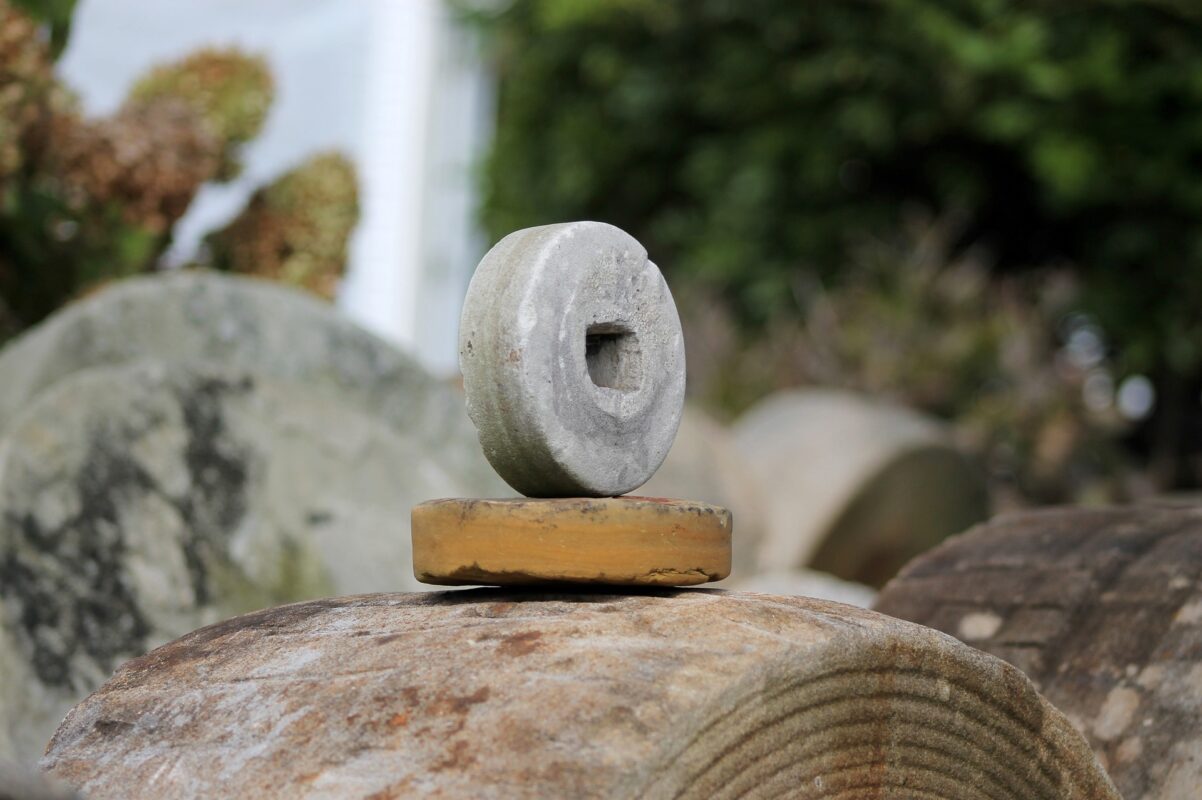The last blog post was about stones for knife sharpening. Now let’s look at the other sharpening methods for kitchen knives.
Sharpening steel, strop, roller sharpener and sharpening machine for kitchen knives
The sharpening steel, fast, efficient sharpening for in between.
There are different sharpening steels. The classic sharpening steel is a round or oval rod. The surface is corrugated. The effect is that of a fine file with little chip removal.
Coarse, standard and fine drawing steels are commercially available. Corresponding to the abrasion when sharpening.
Sharpening steels for very hard knives
Diamond steels usually have a strong grinding effect and high stock removal. This also applies to titanium-coated steels. These are often used for very hard knives, carbon steels and ceramic knives
Ceramic sharpening steels are ideal for harder and more brittle types of knives.
Whening is not difficult, it does take some experience and practice.
When sharpening, it is important to maintain the correct sharpening angle. It should be constantly around 15 degrees. That requires quite a bit of fine motor skills and concentration…
How do I use the sharpening steel correctly
The steel is held, hand down, at an angle away from the body and pointing upwards. The knife is passed from top to bottom towards the holding hand.
The handle is close to the body at the waistline. The blade touches the hand with the sharpening point down along the side of the sharpening steel. No fear. The handle is usually large enough to protect the hand from the blade.
This is how you make the same number of moves on one side of the knife and the same number of moves on the other side of the knife. Try to keep the angle constant and draw the blade evenly from tip to bolster.
Rule of thumb when buying a sharpening steel, large knives, long steel.
A small disadvantage, nicks in the knife are rather deepened by the sharpening steel. Frequent sharpening with the steel should be followed by basic grinding by a professional.
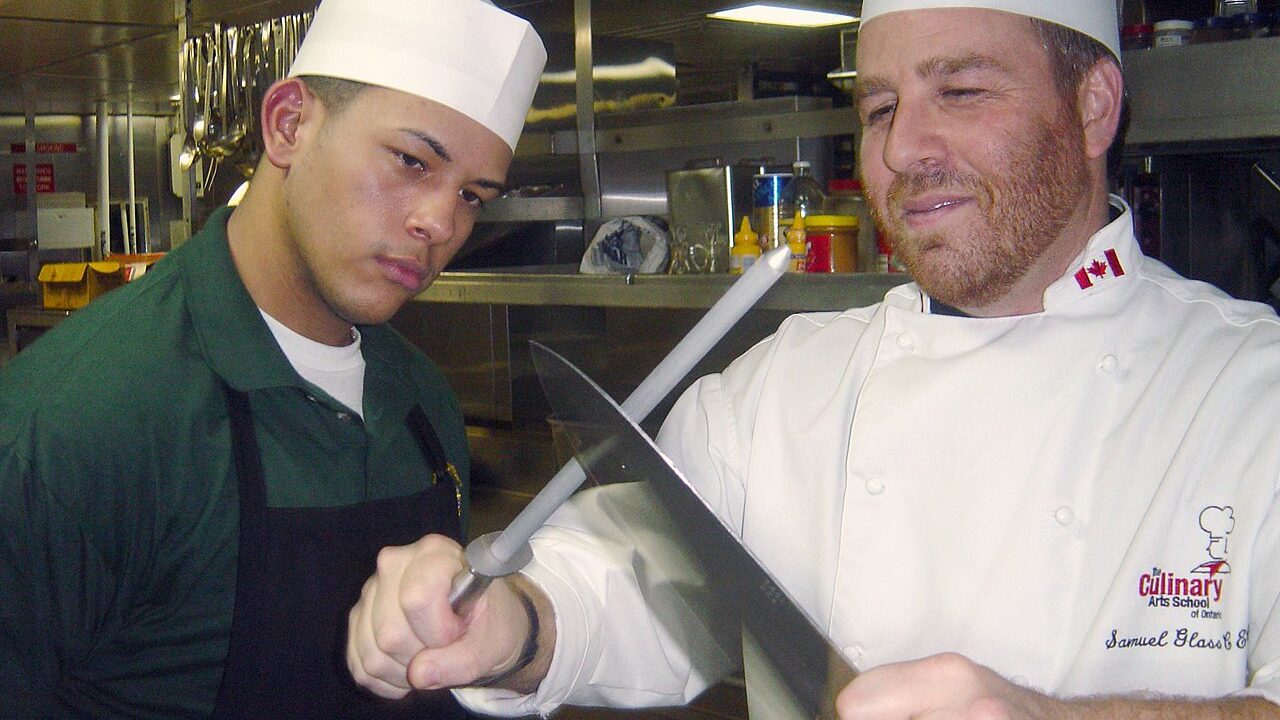
The burr, a negative grinding result that needs to be removed.
After sharpening the kitchen knife, a thin burr remains on the blade. This becomes thinner the finer the grain of the related stone is.
Finally, it must be removed. Otherwise this degree will reverse and make the actual sharpening result obsolete.
The pull-off strap.
There is a simple solution to removing the burr from a freshly sharpened and cleaned kitchen knife.
A normal leather belt will do. Find a hook or something similar where you can hang it. Coat the rough inside of the belt with household metal polish. Polishing paste for car parts also works.
With one hand, tighten the belt. Pull the knife in the sharpening angle along the cutting edge in both directions and at the same time across the belt. This will remove the burr.
You can also get pullers in specialist shops for little money. This is high-quality leather that is mounted on a flat piece of wood. Good abrasives of different grits are available for this purpose. Green chromium oxide pastes are a good place to start after the raw belt has been oiled for the first time.
A tension screw belt is a little more demanding.
It consists of a sling made of porous leather held by two jaws. At the end a handle to handle the tensioning strap.
The advantage is that you have two sides on which you can apply different grinding pastes. For example, green chromium oxide on one side and the finer polishing compound Diamantine on the other.
Another advantage, when you loosen the tension on the leather strap, you get a slightly concave finish.
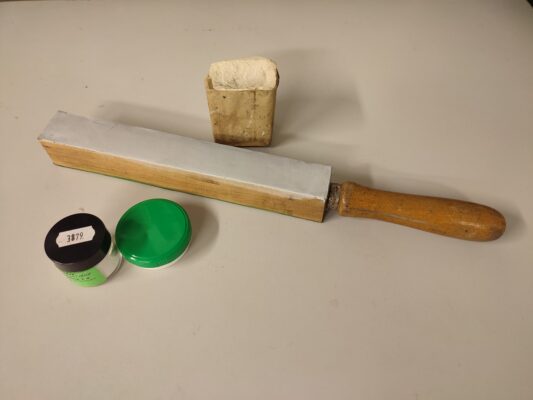
One of the biggest challenges when sharpening knives freehand is maintaining a set angle consistently. Human ingenuity has found a good solution.
Kitchen knife sharpener, fixed angle sharpening systems
A simple knife and sharpening stone holder solves the problem. So-called knife sharpeners, or knife sharpening systems with a fixed angle.
Here the knife is clamped horizontally with the back of the knife.
A joint sits on a pivot point above the middle of the back of the knife. In this, a movable grindstone is guided on an axis.
The height above the back of the knife determines the sharpening angle of the stone. The stone can be guided over the cutting edge at a constant angle.
Most of these simple knife-setup have four stones pivoted on the axle. You can change to the next finer stone with a quarter turn.
Simple, cheap, convincing. The purchase price starts at around thirty euros.
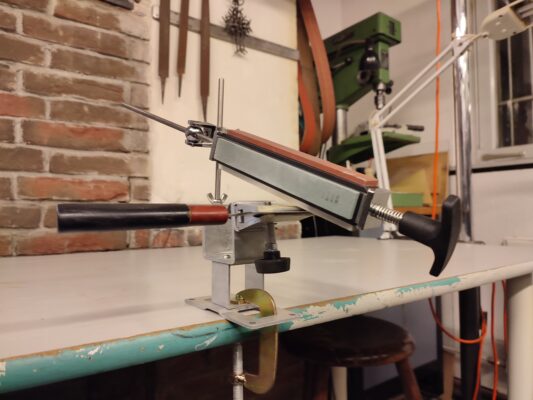
Roll loops
A nice solution to keep the sharpening angle constant comes from a carpentry business in Breisgau. Here the knife is held at a fixed angle on a small board by means of magnets.
A cylindrical roller is used to move parallel to the blade edge. The round top surface of the cylinder thus rolls along the cutting edge. The circular surface can be equipped with different grinding media. Grain size and abrasive can be changed.
A good practical idea but a bit more expensive.
Professional machines, electric grinding.
The most convincing system for sharpening knives at an exact sharpening angle comes from the company Tormek in Sweden.
The fact that this grinding machine delivers very good results can be seen from the many imitators around the world who have copied this principle.
The Tormek is a combination of wet grinding and deburring with a leather disc. The machines are now available in different sizes.
The entry-level machine has a 200 x 40 mm aluminum oxide sharpening stone. Sufficient for all normal kitchen knives. The stone runs in a water bath.
In order to keep the grinding angle exactly and constantly the same, there is a steel bracket in the motor housing. This can be varied in height and angle. In order to slide the knife along the axis of the bracket, the chef’s knife is clamped in a holder.
This always keeps the blade exactly at the correct angle when moving over the stone. After sharpening, the knife can be deburred on the leather-covered disc.
Stones from 220 to 1000 grit are commercially available.
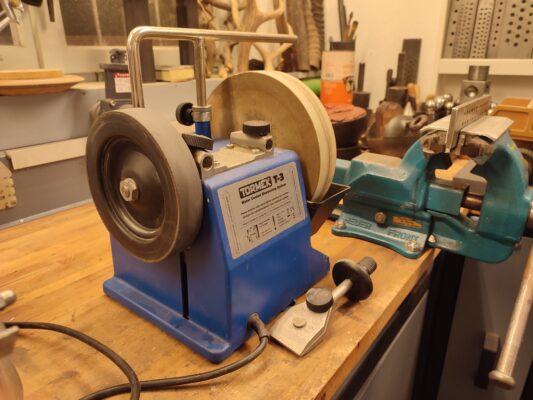
Test sharpness
Testing the sharpness of a knife is usually not objective. High sharpness often comes at the expense of edge retention or corrosion resistance. Only knives of the same type of steel with the same cutting angle and applied pressure can be compared.
For us normal consumers, hobby chefs and knife freaks, our own experience and feeling for the cut always counts.
The tomato test is legendary. If the knife slides through the hard skin of a tomato without pressure, it is sure to be sharp.
Scrape the blade at a flat angle away from your body over your fingernail. This is a good way to determine how sharp the cutting edge is.
You can feel the resistance of the knife in your finger and see if a small chip comes loose. This is definitely satisfactory.
Please avoid all attempts with upper arm hair or other parts of the body. This can end bloody.
The paper test is the best test because no bruised tomato, no blood, no hair, no risk.
For the paper test, take a thin piece of paper and, holding the knife and paper away from your body, cut thin strips.
The knife is placed on the edge of the sheet and pulled towards you during the cut. If you succeed and strips fall off, the knife is sharp.
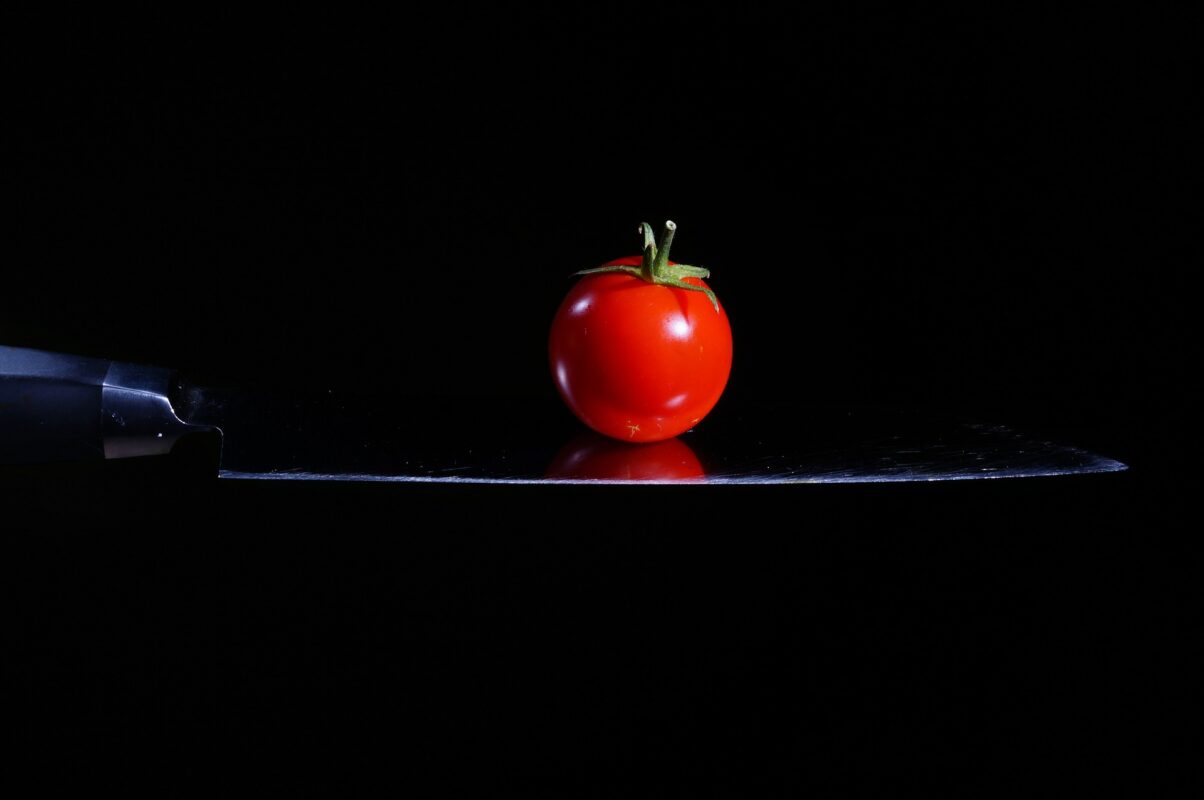
https://typemyknife.com/kitchen-knife-perfect-sharpening-and-grinding-t-1/
https://typemyknife.com/kitchen-knife-sharpening-with-machine-stone-or-wetzstahl-t-3/
After all these in-depth tips and information, we wish you every success in sharpening your kitchen knives.
TYPEMYKNIFE® always wants a sharp cut.
TYPEMYKNIFE BLOG 2023

